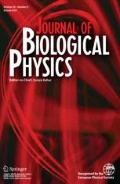Abstract
Detailed experimental data from patch clamp experiments on pancreatic α-cells in intact mouse islets are used to model the electrical activity associated with glucagon secretion. Our model incorporates L- and T-type Ca2+ currents, delayed rectifying and A-type K+ currents, a voltage-gated Na+ current, a KATP conductance, and an unspecific leak current. Tolbutamide closes KATP channels in the α-cell, leading to a reduction of the resting conductance from 1.1 nS to 0.4 nS. This causes the α-cell to depolarise from −76 mV to 33 mV. When the basal membrane potential passes the range between −60 and −35 mV, the α-cell generates action potentials. At higher voltages, the α-cell enters a stable depolarised state and the electrical activity ceases. The effects of tolbutamide are simulated by gradually reducing the KATP conductance (g K,ATP ) from 500 pS to 0 pS. When g K,ATP is between 72 nS and 303 nS, the model generates action potentials in the same voltage range as the α-cell. When g K,ATP is lower than 72 nS, the model enters a stable depolarised state, and firing of action potentials is inhibited due to voltage-dependent inactivation of the Na+ and T-type Ca2+ currents. This is in accordance with experimental results. Changing the inactivation parameters to those observed in somatostatin-secreting δ-cells abolishes the depolarised inactive state, and leads to β-cell like electrical activity with action potentials generated even after complete closure of the KATP channels.
Similar content being viewed by others
References
Göpel, S., Kanno, T., Barg, S., Weng, X.-G., Gromada, J., Rorsman, P.: Regulation of glucagon release in mouse α-cells by k ATP channels and inactivation of TTX-sensitive Na+. J. Physiol. 528(3), 509–520 (2000)
Göpel, S.O., Kanno, T., Barg, S., Rorsman, P.: Patch-clamp characterisation of somatostatin-secreting δ-cells in intact mouse pancreatic islets. J. Physiol. 528(3), 497–507 (2000)
Gromada, J., Bokvist, K., Ding, W.G., Barg, S., Buschard, K., Renstrom, E., Rorsman, P.: Adrenaline stimulates glucagon secretion in pancreatic A-cells by increasing the Ca2+ current and the number of granules close to the L-type Ca2+ channels. J. Gen. Physiol. 110, 217–228 (1997)
Rorsman, P., Hellman, B.: Voltage-activated currents in guinea pig pancreatic α 2 cells. evidence for Ca2+-dependent action potentials. Br. J. Pharmacol. 91, 223–242 (1988)
Berts, A., Ball, A., Gylfe, E., Hellman, B.: Suppression of Ca++ oscillations in glucagon-producing α2-cells by insulin/glucose and amino acids. Biochim. Biophys. Acta 1310, 212–216 (1996)
Nadal, A., Queseda, I., Soria, B.: Homologous and heterologous asynchronicity between identified α-,β- and δ-cells within intact islets of Langerhans in the mouse. J. Physiol. 517, 85–93 (1999)
Bokvist, K., Olsen, H.L., Hoy, M., Gotfredsen, C.F., Holmes, W.F., Buschard, K., Rorsman, P., Gromada, J.: Characterization of sulfonylurea and ATP-regulated K+ channels in rat pancreatic A-cells. Pflügers Arch. 438(4), 428–436 (1999)
Rajan, A.S., Aguilar-Bryan, L., Nelson, D.A., Nichols, C.G., Wechsler, S.W., Lechago, J.: Sulfonylurea receptors and ATP-sensitive K+ channels in clonal pancreatic alpha cells. evidence for two high-affinity sulfonylurea receptors. J. Biol. Chem. 268(20), 15221–15228 (1993)
Detimary, P., Dejonghe, S., Ling, Z., Pipeleers, D., Schuit, F., Henquin, J.: The changes in adenine nucleotides measured in glucose-stimulated rodent islets occur in β cells but not in α cells and are also observed in human islets. J. Biol. Chem. 273, 33905–33908 (1998)
Östenson, C.G., Agren, A., Brolin, S.E., Petersson, B.: Adenine nucleotide concentrations in A2-cell rich and normal pancreatic islets from guinea pig. Diabetes Metab. 6, 5–11 (1980)
Bertram, R., Previte, J., Sherman, A., Kinard, T.A., Satin, L.S.: The phantom burster model for pancreatic beta-cells. Biophys. J. 79(6), 2880–2892 (2000)
Chay, T.R., Keizer, J.: Minimal model for membrane oscillations in the pancreatic beta-cell. Biophys. J. 42(2), 181–190 (1983)
Hille, B.: Ion Channels of Excitable Membranes. Sinauer Associates, Sunderland, Massachusetts (2001)
Macianskiene, R., Viappiani, S.: Slowing of the inactivation of cardiac voltage-dependent sodium channels by the amiodarone derivative 2-methyl-3-(3,5-diiodo-4-carboxymethoxybenzyl) benzofuran (kb130015). J. Pharmacol. Exp. Ther. 304, 130–138 (2003)
Ronner, P., Matschinsky, F.M., Hang, T.L., Epstein, A.J., Buettger, C.: Sulfonylurea-binding sites and ATP-sensitive K+ channels in alpha-tc glucagonoma and beta-tc insulinoma cells. Diabetes 42(12), 1760–1772 (1993)
Conley, E.C., Brammar, W.J.: The Ion Channel Facts Book: Voltage-gated Channels (volume 4). Academic, San Diego, California (1999)
Rich, M.M., Pinter, M.J.: Sodium channel inactivation in an animal model of acute quadriplegic myopathy. Ann. Neurol. 50, 26–33 (2001)
Massi-Benedetti, F., Flaorni, A., Luyckx, A., Lefebvre, P.: Inhibition of glucagon secretion in the human newborn by simultaneous administration of glucose and insulin. Horm. Metab. Res. 6, 392–396 (1974)
Samols, E., Tyler, J.M., Mialhe, P.: Suppression of pancreatic glucagon release by the hypoglycaemic sulphonylureas. Lancet 7587, 174–176 (1969)
Vance, J.E., Buchanan, K.: Interrelationship between glucagon and insulin release from isolated islets of Langerhans. Diabetes 17, 311–312 (1968)
Samols, E., Tyler, J.M., Marks, V.: Stimulation of glucagon secretion by oral glucose. Lancet 7425, 1257–1259 (1965)
Pek, S., Fajans, S.S., Floyd, J.C., Knopf, R.F., Conn, J.W.: Failure of sulfonylureas to suppress plasma glucagon in man. Diabetes 21, 216–223 (1972)
Loubatieres, A.L., Loubatieres-Mariani, M.M., Alric, R., Ribes, G.: Tolbutamide and glucagon secretion. Diabetologia 10(4), 271–276 (1974)
Author information
Authors and Affiliations
Corresponding author
Rights and permissions
About this article
Cite this article
Diderichsen, P.M., Göpel, S.O. Modelling the Electrical Activity of Pancreatic α-cells Based on Experimental Data from Intact Mouse Islets. J Biol Phys 32, 209–229 (2006). https://doi.org/10.1007/s10867-006-9013-0
Received:
Accepted:
Published:
Issue Date:
DOI: https://doi.org/10.1007/s10867-006-9013-0



